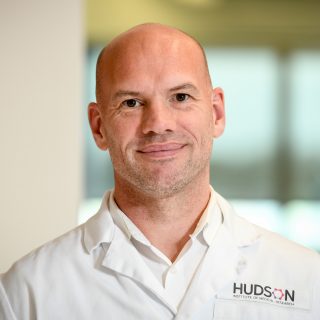Treatment type: Cell therapies
-
Breathing life into patients with ‘irreversible’ lung disease
Lung fibrosis patients could soon inhale ‘droplets’ of tiny particles derived from stem-like cells found in the human placenta in an effort to repair ‘irreversible’ deadly scarring of the lungs, thanks to world-first research. The regenerative medicine treatment could one day form an alternative for patients with the disease who aren’t eligible for a life-saving… Read more
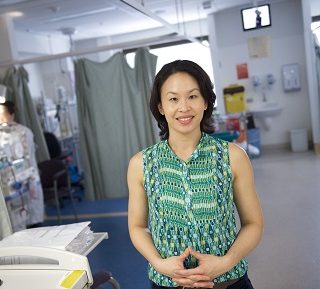
-
World-first trial of placental cell treatment helping premature babies
A world-first therapy, developed at Hudson Institute of Medical Research and Monash University, using cells from the human placenta to repair the damaged lungs of premature babies, is giving hope to families of the most fragile infants like Harry Campbell. The results of a clinical trial at the Monash Children’s Hospital – the culmination of… Read more
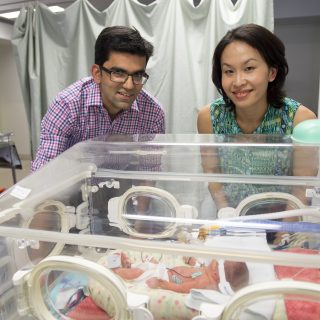
-
‘Needle in a haystack’ of stem cells found – hope for cerebral palsy
Cells that could be used to repair damage to babies’ brains caused by oxygen starvation during pregnancy or at birth have been identified, bringing hope for the prevention of cerebral palsy. A team of researchers from Hudson Institute of Medical Research and Monash University made the discovery while examining stem cells in umbilical cord blood,… Read more
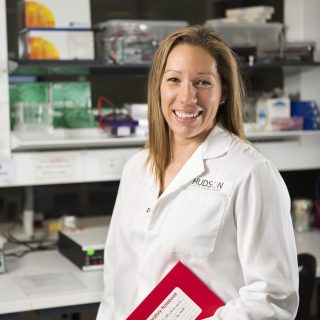
-
Sparking the skills to take research to industry
PhD student, Anqi Li has been selected to take part in the prestigious SPARK Biomedical Innovation and Entrepreneurship training course in Berlin, Germany this month. The two-week intensive course aims to bridge the gap between industry and academia by helping PhD students to think in creative, innovative and entrepreneurial ways. It is part of the… Read more
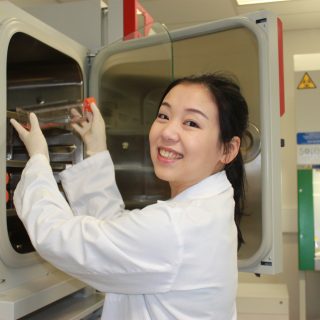
-
Melbourne innovation set to revolutionise cell therapy industry
A world-leading Melbourne innovation is rapidly changing the way cell therapies are manufactured to treat diseases including stroke and cerebral palsy, taking these treatments out of the lab and into hospitals. The new cell-processing technology, ROTEA, developed by Melbourne start-up, Scinogy in conjunction with Hudson Institute of Medical Research, is significantly reducing the costs and… Read more
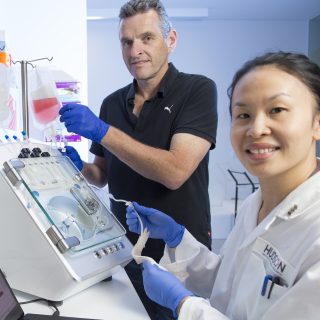
-
Outstanding PhD students receive recognition
Graduate research students from The Ritchie Centre took the lion’s share of awards at the recent Perinatal Society of Australia and New Zealand (PSANZ) annual scientific meeting.… Read more
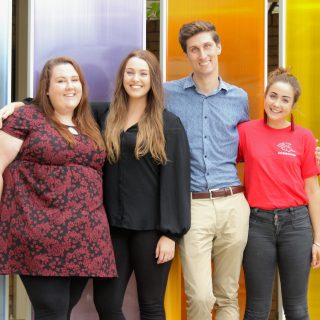
-
Bioengineering: the new approach for treating pelvic organ prolapse
Hudson Institute of Medical Research scientists are combining stem cells from the lining of a woman’s own uterus with nanobiomaterials (biodegradable materials engineered on the nanoscale) in a world-first approach to develop safer, more effective treatments for pelvic organ prolapse.… Read more
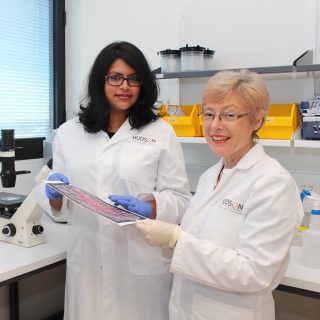
-
Message pattern sent out by embryo key to successful pregnancy
Hudson Institute researchers have identified that a small molecule, released by a human embryo in the womb, could be key to understanding why some embryos do not implant during IVF. The lining of the uterus or womb, also called the endometrium, is like a ‘soil’ where an embryo, or ‘seed’, must implant in order to… Read more

-
When science meets innovation: cell therapies
Leading Australian stem cell researcher, Dr Rebecca Lim has just returned from Toronto, the global centre of cell therapies research and a hotbed of innovation and start-ups. She shares what happens when science meets innovation and commercialisation. You’ve just been to Toronto, Canada to visit the Centre for Commercialisation of Regenerative Medicine. What was the… Read more

-
Placental stem cells may protect against effects of pre-term lung disease
A team of researchers at The Ritchie Centre, Hudson Institute of Medical Research has published further evidence to support the use of stem cells derived from the placenta to protect newborn babies against the debilitating preterm lung disease, bronchopulmonary dysplasia (BPD), and its severe lifelong impacts.… Read more
